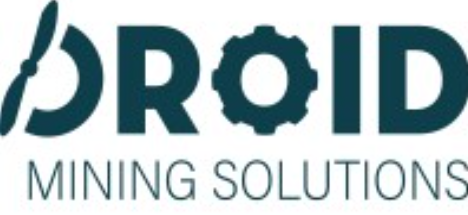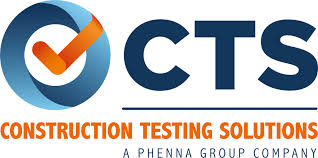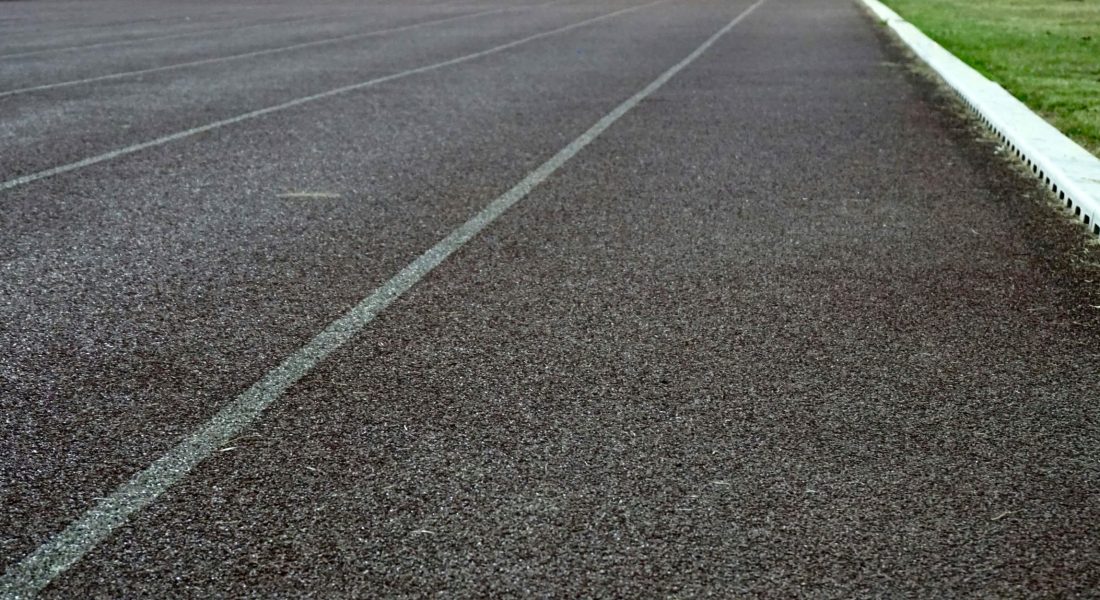Subsidence might not make headlines, but it’s a serious problem. Slowly sinking ground can damage buildings, pipelines, and even whole neighborhoods if you don’t catch it early. Thankfully, the old “wait for cracks to show up” approach is fading. Today, there are tools that let you spot trouble before it escalates.

1. FlyPix AI
At FlyPix AI, we focus on automating how large-scale imagery is analyzed so that changes in the ground surface can be detected faster and with greater consistency. Our AI agents interpret satellite, aerial, and drone data, helping teams monitor land deformation and identify early signs of subsidence across wide or hard-to-access areas. By removing much of the manual annotation work, we make it easier for engineers and researchers to get accurate insights from complex geospatial scenes in just a few seconds instead of hours.
For subsidence monitoring, our approach allows users to train custom AI models that recognize ground displacement, shifting infrastructure, or patterns that often precede structural movement. These models can be adapted for different environments, from urban foundations to mining zones or agricultural land. The main goal is to give users a clear visual picture of where the terrain is changing, so they can take preventive action before problems escalate.
Key Highlights:
- Automates image analysis of satellite, aerial, and drone data
- Detects and outlines ground-level changes with high precision
- Custom AI model training for specific project requirements
- Scales monitoring for industrial, environmental, or infrastructure sites
- Cloud-based processing for quick access to analyzed results
Who it’s best for:
- Engineering and construction teams tracking land stability
- Environmental consultants monitoring long-term terrain changes
- Governments managing infrastructure and public safety
- Mining, energy, and agriculture sectors observing ground shifts over time
Contact Information:
- Website: flypix.ai
- Email: info@flypix.ai
- LinkedIn: www.linkedin.com/company/flypix-ai
- Address: Robert-Bosch-Str. 7, 64293 Darmstadt, Germany
- Phone: +49 6151 2776497

2. GeoKinesia
GeoKinesia focuses on detecting and tracking ground deformation through InSAR-based monitoring. They use radar satellite imagery to identify subtle vertical movements in the Earth’s surface that may indicate early-stage subsidence. By comparing data over time, their approach allows for precise mapping of where terrain is shifting, which is particularly valuable in dense urban areas where traditional survey tools or sensors fall short. Their work helps uncover both human-driven and natural causes of subsidence, from groundwater extraction to soil compaction and sediment loss.
In 2025, their methodology remains one of the key techniques for assessing stability in cities and infrastructure zones worldwide. GeoKinesia has carried out extensive monitoring across Spain, Mexico, and other regions, focusing on how long-term surface motion affects construction, water management, and risk mitigation. As subsidence increasingly overlaps with flooding risks in coastal and delta regions, their experience with large-scale InSAR analysis offers a practical way to visualize and interpret deformation patterns that could otherwise go unnoticed until they cause real damage.
Key Highlights:
- Uses InSAR radar technology to measure surface movement over time
- Detects gradual or sudden ground sinking linked to various causes
- Effective for both urban and rural monitoring scenarios
- Supports analysis of wide regions without direct ground access
- Helps identify deformation patterns that affect buildings and infrastructure
Who it’s best for:
- Urban planners and civil engineers monitoring city stability
- Infrastructure managers overseeing roads, pipelines, or utilities
- Environmental and water resource authorities tracking land compaction
- Research groups studying soil behavior and ground movement trends
Contact Information:
- Website: geokinesia.com
- E-mail: info@geokinesia.com
- LinkedIn: www.linkedin.com/company/geokinesia
- Address: Gran Via de Carlos III, 98, piso 10, 08028, Barcelona, Spain
- Phone: +34673240720

3. U.S. Geological Survey (USGS)
The U.S. Geological Survey applies several complementary methods to study subsidence and related sea level rise. Their work combines surface-based and satellite-based measurements to understand how land elevation changes over time and what factors drive it. Tools such as extensometers, GPS surveys, and InSAR data give scientists multiple perspectives on ground movement, from deep aquifer compaction to surface-level sinking. Each technique offers a different level of precision and coverage, and together they help explain the broader dynamics of land deformation across both coastal and inland regions.
In 2025, this multi-tool approach continues to set the foundation for reliable subsidence monitoring and long-term planning. Extensometers provide highly accurate readings of aquifer compaction at specific sites, while InSAR imagery tracks elevation shifts over wide areas. GPS surveys and tidal stations add crucial spatial and temporal context, helping researchers distinguish between local sinking and regional sea level changes. Used together, these systems create a fuller picture of how water use, soil structure, and natural processes interact to shape ground stability.
Key Highlights:
- Combines InSAR, extensometers, GPS, and tidal stations for comprehensive monitoring
- Tracks both local and regional land surface changes over time
- Detects aquifer compaction and ground sinking linked to groundwater withdrawal
- Integrates satellite and field data for stronger validation of results
- Supports long-term observation of coastal and inland deformation
Who it’s best for:
- Scientists and geotechnical researchers studying land motion and aquifer behavior
- Environmental and water management agencies focused on coastal resilience
- Urban and regional planners assessing infrastructure stability
- Academic institutions conducting long-term subsidence or sea level studies
Contact Information:
- Website: www.usgs.gov
- E-mail: tnm_help@usgs.gov
- Facebook: www.facebook.com/USGeologicalSurvey
- Twitter: x.com/USGS
- LinkedIn: www.linkedin.com/company/usgs
- Instagram: www.instagram.com/usgs
- Address: 1730 East Parham Road Richmond, VA 23228 United States
- Phone: (804) 261-2600

4. Droid Mining Solutions
Droid Mining Solutions provides a subsidence monitoring system that relies on DGPS measurements to track vertical ground movement around mining areas. Their approach focuses on observing gradual surface displacement caused by underground excavation, helping projects maintain structural integrity and comply with relevant reporting requirements. The method is based on placing ground control points across sensitive zones and repeatedly recording elevation data to capture any measurable shifts over time.
In 2025, DGPS-based monitoring continues to serve as a practical and direct way to understand how underground mining influences surface conditions. While not as wide-ranging as satellite systems, it delivers a level of precision that suits operations needing clear, repeatable measurements at specific sites. The output, including comparative elevation maps and displacement graphs, gives engineers and regulators a straightforward way to assess stability trends and plan responses where land movement becomes a concern.
Key Highlights:
- Uses DGPS instruments to measure vertical displacement
- Relies on ground control points for consistent accuracy
- Provides comparative elevation maps and displacement trend graphs
- Supports documentation aligned with regulatory reporting standards
Who it’s best for:
- Underground coal mines and active excavation projects
- Operations near residential or infrastructure zones
- Engineers assessing ground stability and deformation patterns
- Mining companies preparing reports for compliance reviews
Contact Information:
- Website: www.droidminingsolutions.com
- E-mail: info@droidminingsolutions.com
- LinkedIn: www.linkedin.com/company/droid-mining-solutions
- Instagram: www.instagram.com/droidminingsolutions
- Address: T1-T4, Rameshwaram Apartment, Plot no.24, Nagpur, Maharashtra 440024
- Phone: +91 8149259405

5. Substruck Ltd.
Substruck Ltd. focuses on subsidence monitoring using crack width monitors, commonly known as tell tales, and other specialized measurement devices. These systems record the opening, closing, or cyclical movement of structural cracks over time, providing a direct way to track the stability of buildings and other structures. Professionals install these devices carefully to ensure accurate readings, as improper placement can lead to misleading data or ineffective monitoring. The monitors range from simple two-plate designs to advanced versions with additional calibration pegs, allowing for precise measurements in both horizontal and vertical directions.
In 2025, these methods remain relevant for residential and commercial settings where high-resolution, site-specific monitoring is needed. While not suitable for large-scale area monitoring like satellite-based techniques, crack monitors give engineers and surveyors the ability to closely observe structural changes over months or years. Alongside level monitoring and other specialized systems, these tools provide a hands-on approach to understanding how subsidence affects individual structures and support decision-making for targeted repairs.
Key Highlights:
- Measures horizontal and vertical crack movement with millimeter precision
- Available in standard and advanced designs with calibration enhancements
- Provides continuous or periodic readings to track trends over time
- Requires professional installation for reliable and accurate results
Who it’s best for:
- Residential and commercial property owners monitoring structural integrity
- Engineers and surveyors conducting detailed subsidence investigations
- Ground specialists planning targeted repairs or interventions
- Situations where site-specific, high-accuracy data is essential
Contact Information:
- Website: substruck.ie
- E-mail: info@substruck.ie
- Address: Substruck Ltd. Brookpark House, Unit 3 Euro Innovation Park Little Island Cork, Ireland
- Phone: (021) 435 1234

6. EOSDA
EOSDA is all about watching the land from above – literally. They use satellite imagery and InSAR tech to track subtle changes in ground elevation. By comparing radar data over time, they can spot early signs of things like aquifer depletion or slow land settlement. The best part? You don’t have to physically visit the site – it works over huge areas, which is perfect when on-the-ground monitoring would be tricky or expensive.
Their tools give researchers and planners a bird’s-eye view of how the land is shifting, helping them predict potential problems before they affect infrastructure or agriculture.
Key Highlights:
- Uses satellite imagery and InSAR to detect ground elevation changes
- Tracks subsidence over large geographic areas without physical access
- Detects early signs of aquifer depletion and land settlement
- Provides scalable monitoring that complements ground-based measurements
Who it’s best for:
- Environmental researchers and hydrologists tracking aquifer health
- Agricultural planners monitoring irrigation and soil stability
- Urban and regional planners assessing subsidence risks
- Organizations needing large-scale, continuous monitoring of land movement
Contact Information:
- Website: eos.com
- Facebook: www.facebook.com/eosda
- Twitter: x.com/eos_da
- LinkedIn: www.linkedin.com/company/eos-data-analytics
- Instagram: www.instagram.com/eosdataanalytics
- Address: 800 W. El Camino Real, Suite 180, Mountain View, CA 94040 USA

7. SILLE
SILLE monitors land subsidence across large urban and industrial areas using satellite radar data and InSAR-based time series analysis. By tracking ground movements over time, they can detect subtle millimeter-scale shifts caused by factors like groundwater extraction, soil compaction, and urban development. This allows for wide-area monitoring without the need for on-site equipment, offering a continuous view of how subsidence evolves in cities, ports, and industrial zones. Analysts use the collected data to reconstruct deformation patterns and assess risks to infrastructure, helping to inform maintenance and operational decisions.
In 2025, tools like SILLE are increasingly relevant for urban planning and civil engineering projects. The ability to combine satellite observations with in-situ measurements gives a more complete understanding of ground behavior, allowing for early identification of vulnerable structures or zones. This approach provides a scalable way to manage subsidence risks, especially in regions where large-scale groundwater extraction or complex soil conditions pose ongoing challenges to stability and safety.
Key Highlights:
- Uses satellite radar and InSAR to monitor millimeter-scale ground movements
- Covers large urban, port, and industrial areas without on-site sensors
- Provides time-series analysis for deformation reconstruction
- Supports integration with in-situ measurements for detailed assessment
Who it’s best for:
- Urban planners and civil engineers assessing subsidence risk
- Municipal authorities managing infrastructure safety
- Environmental researchers studying groundwater and soil compaction
- Organizations needing wide-area, continuous monitoring of ground stability
Contact Information:
- Website: www.sille.space
- E-mail: sales@sille.space
- Facebook: www.facebook.com/sillespace
- Phone: +372 6263 0000

8. Digby Wells Environmental – Mango Map
Digby Wells Environmental from Mango Map uses LiDAR-based mapping to monitor land subsidence over large areas. Their approach captures detailed topographic changes by comparing repeated aerial scans, allowing analysts to detect shifts in ground elevation over time. This method is particularly useful in regions affected by mining, groundwater extraction, or other human and natural activities that can cause gradual or sudden surface movements. The resulting maps help identify areas of concern and visualize the spatial patterns of subsidence across landscapes.
In 2025, tools like this provide valuable insights for planning and risk management. By integrating LiDAR data with other environmental and geotechnical information, they can offer a comprehensive picture of ground stability. This enables decision-makers to prioritize interventions, track changes over time, and evaluate the potential impact on infrastructure, communities, and natural resources. The ability to handle large-scale datasets makes it suitable for both localized and regional monitoring programs.
Key Highlights:
- Uses LiDAR-based aerial mapping for high-resolution surface monitoring
- Detects gradual and sudden changes in ground elevation
- Produces detailed maps showing spatial patterns of subsidence
- Can integrate with other geotechnical and environmental data for analysis
Who it’s best for:
- Environmental and geotechnical consultants monitoring large areas
- Mining and industrial operations assessing land stability
- Municipal and regional authorities managing infrastructure risks
- Researchers studying environmental impacts of subsidence
Contact Information:
- Website: mangomap.com
- E-mail: sales@mangomap.com
- LinkedIn: www.linkedin.com/company/mangomap
- Address: 1 Victoria Street, Bristol BS1 6AA, UK
- Phone: +44 117 230 1999

9. Hexagon – Subsidence Mapping Technology
Hexagon applies advanced subsidence mapping techniques to track ground movement across wide areas. Their approach relies on differential interferometric synthetic aperture radar (DInSAR) to monitor surface deformation in three dimensions. By repeatedly capturing radar images from satellites and analyzing persistent scatterers, they can detect subtle shifts over time. This allows organizations to understand how subsidence develops, whether it’s due to aquifer depletion, underground mining, or natural compaction, and provides a detailed picture of vertical and horizontal movements.
The tool is particularly suited for ongoing monitoring where understanding both the location and rate of ground movement is critical. Hexagon’s system can integrate with their ERDAS IMAGINE software and M.App Enterprise platform, creating detailed displacement maps for analysis and operational planning. Using these maps, stakeholders can identify areas at risk, plan maintenance, and mitigate potential impacts on infrastructure and natural resources. This makes it a practical solution for projects requiring continuous monitoring over months or years.
Key Highlights:
- Uses DInSAR to detect subsidence in three dimensions
- Analyzes time-series satellite radar images for persistent surface scatterers
- Integrates with ERDAS IMAGINE and M.App Enterprise for mapping and analysis
- Supports monitoring of both vertical and horizontal ground movements
Who it’s best for:
- Utility and infrastructure managers monitoring urban and industrial areas
- Mining companies tracking subsidence over active or abandoned sites
- Water resource authorities monitoring aquifer-related ground movement
- City planners and civil engineers assessing risk to roads, bridges, and public structures
Contact Information:
- Website: hexagon.com
- E-mail: uk.sales@leica-geosystems.com
- Facebook: www.facebook.com/HexagonAB
- Twitter: x.com/HexagonSIG
- LinkedIn: www.linkedin.com/company/hexagon-sig
- Instagram: www.instagram.com/hexagon_sig
- Address: Hexagon House, Michigan DriveTongwellMilton Keynes, Buckinghamshire, MK15 8HT
- Phone: +44 870 446 2667

10. AITCV – Land Subsidence/Deformation Monitoring System
AITCV utilizes Synthetic Aperture Radar (SAR) satellite data to measure land subsidence and deformation with millimeter precision. This system tracks gradual changes in ground elevation over time, making it particularly useful in areas where groundwater extraction or seawater intrusion affects the stability of urban and coastal environments. By analyzing repeated satellite passes, they can detect subtle vertical shifts across large regions without installing ground-based equipment, which provides a comprehensive view of how land surfaces are moving.
The monitoring system is designed for continuous observation, helping authorities and engineers evaluate the risks posed by subsidence and plan interventions accordingly. Its capability to integrate SAR data over time allows for detailed analysis of trends, supporting infrastructure maintenance, urban planning, and environmental protection. This approach emphasizes data accuracy and spatial coverage, giving decision-makers actionable insights into the stability of vulnerable zones.
Key Highlights:
- Uses SAR satellite data for millimeter-level detection of subsidence
- Monitors urban areas affected by groundwater extraction
- Tracks coastal regions vulnerable to seawater intrusion
- Supports long-term observation without ground-based installations
Who it’s best for:
- City planners and civil engineers in subsidence-prone regions
- Environmental agencies monitoring coastal and urban land movement
- Infrastructure managers overseeing roads, bridges, and public facilities
- Research institutions studying land deformation and groundwater impacts
Contact Information:
- Website: aitcv.ac.vn
- Facebook: www.facebook.com/aitcv
- LinkedIn: www.linkedin.com/company/ait-vietnam
- Address: 3rd Floor, DETECH Tower, 8 Ton That Thuyet Street, Cau Giay Ward, Hanoi
- Phone: (+84) 24 2321 7777

11. CTS – Crack and Level Monitoring
CTS provides a structured approach to observing the movement of cracks and the overall levels of buildings or structures. Their system tracks the opening, closing, and shifts of cracks in walls both internally and externally, offering a clear picture of how a property or structure is responding over time. By measuring changes in width, length, and orientation at regular intervals, they help identify patterns of movement and potential underlying causes, which is crucial in understanding subsidence or structural stress.
In parallel, level monitoring focuses on the footprint of a building, recording vertical shifts with precision. This allows engineers and surveyors to see exactly where a foundation might be settling or moving, complementing crack monitoring data. The combination of these techniques gives a comprehensive view of structural behavior, supporting maintenance decisions, risk assessment, and long-term planning. Continuous monitoring and detailed reporting ensure that stakeholders can interpret the data effectively and take timely action if necessary.
Key Highlights:
- Tracks crack movement internally and externally
- Measures width, length, and orientation changes over time
- Level monitoring records precise foundation movement
- Provides detailed graphs, visualizations, and reports
- Supports ongoing observation for long-term analysis
Who it’s best for:
- Structural engineers and surveyors assessing building stability
- Property developers monitoring ongoing construction or renovations
- Insurance companies and loss adjusters investigating subsidence claims
- Legal professionals needing documented structural assessments
Contact Information:
- Website: constructiontesting.co.uk
- E-mail: enquiries@constructiontesting.co.uk
- Facebook: www.facebook.com/constructiontesting
- Twitter: x.com/CTStestingltd
- LinkedIn: www.linkedin.com/company/the-testing-group
- Address: 4 Oak Spinney Park Ratby Lane Leicester Leicestershire LE3 3AW
- Phone: 01302 352 652

12. CELT
Subsidence can be sneaky. You might notice a tiny crack in a wall or a slight tilt in a floor, and before you know it, it’s become a bigger problem. That’s where CELT comes in – they focus on tracking exactly how buildings are settling over time, so you get the full picture before things get serious. One of their main approaches is crack monitoring. By measuring cracks in walls over weeks or months, they can tell whether those cracks are stable or slowly widening. It might seem small, but these tiny movements can reveal a lot about what’s happening under your feet – whether it’s soil shrinking, tree roots creeping in, or some deeper geological shift.
They also use level monitoring to watch how a building’s foundation moves. Essentially, they fix points at consistent heights and track any vertical shifts with millimeter-level precision. For trickier sites – like deep excavations or construction zones nearby – they use retro target monitoring to measure movement in three dimensions. Put together, these methods give a detailed snapshot of how subsidence is happening so you can plan repairs or interventions smartly.
Key Highlights:
- Monitors crack growth and movement over time
- Level monitoring tracks foundation shifts with high precision
- Retro target monitoring captures three-dimensional movement
- Data collected at regular intervals for ongoing assessment
- Suitable for short-term or long-term monitoring projects
Who it’s best for:
- Structural engineers and surveyors evaluating building stability
- Property owners concerned about ongoing subsidence
- Developers managing construction on sensitive or variable soil
- Professionals overseeing excavation or deep foundation projects
Contact Information:
- Website: celtduk.com
- E-mail: info@celtduk.com
- Twitter: x.com/InfoEvaluation
- LinkedIn: www.linkedin.com/company/constructive-evaluation-ltd
- Instagram: www.instagram.com/celtduk
- Address: Units 15 & 16 Ford Lane Business Park Ford, Arundel, West Sussex BN18 0UZ
- Phone: 01243 533499
Conclusion
As cities expand and underground resources are tapped, the ground beneath us is rarely as stable as it seems. The tools highlighted in this article show just how far monitoring technology has come – offering ways to track subtle shifts that were once nearly impossible to measure. From satellites scanning vast landscapes to on-the-ground sensors measuring millimeter movements, each approach provides a different lens on the same problem: keeping structures, communities, and infrastructure safe.
What stands out is that there isn’t a one-size-fits-all solution. Some tools excel in capturing wide-area changes over time, while others drill down into the details of a single building or excavation. Taken together, they give engineers, city planners, and property owners a much clearer picture of how the earth is moving beneath their feet. Staying informed and proactive about subsidence isn’t just about preventing damage – it’s about understanding the environment we live in and planning for the shifts that naturally come with it.
